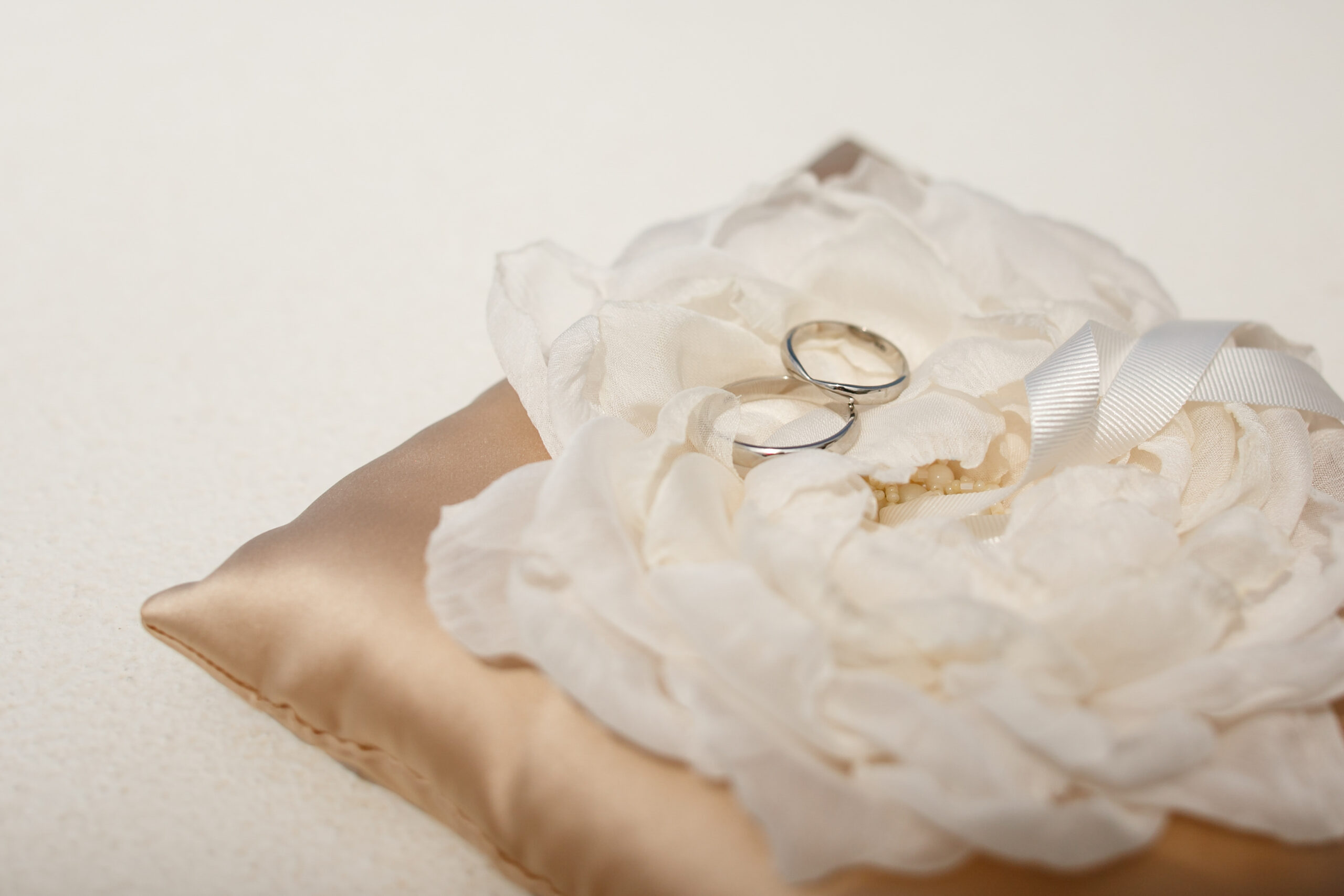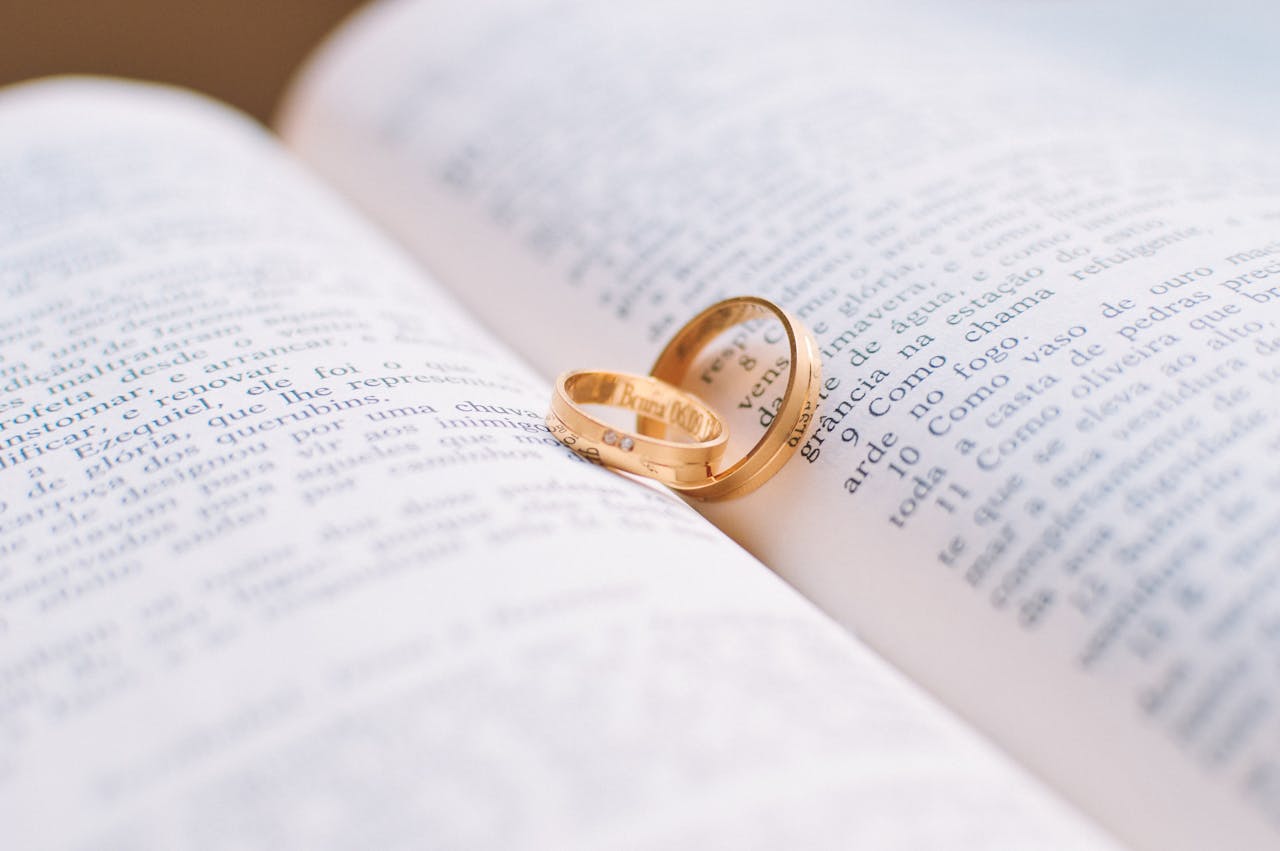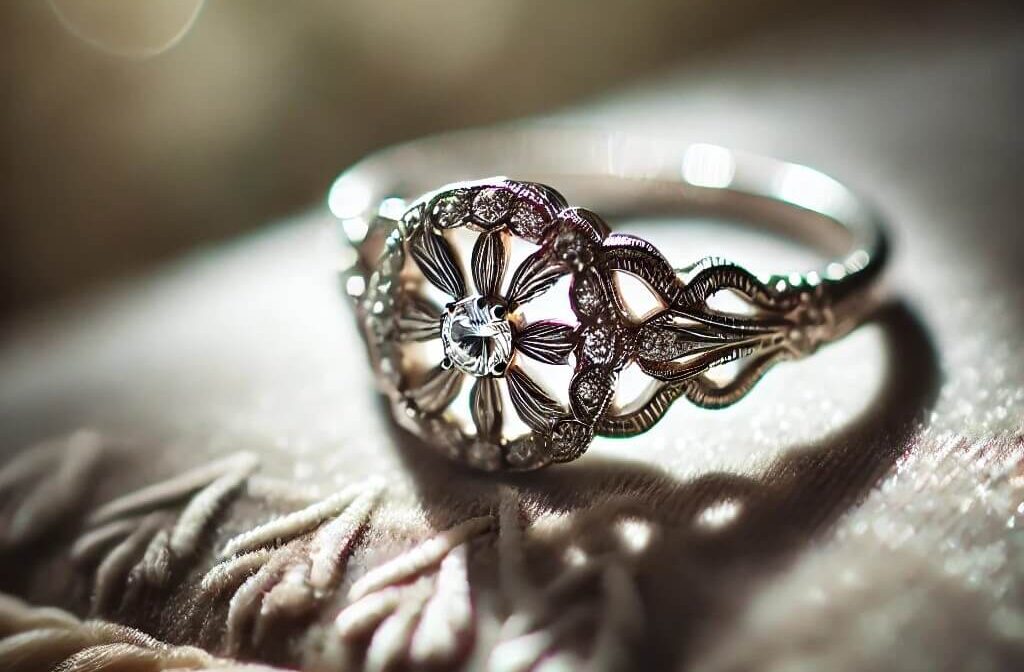Wedding rings are not just pieces of jewelry; they are profound symbols that encapsulate the essence of love, commitment, and unity. These small but significant adornments have been cherished across cultures and centuries, carrying with them rich traditions and deep meanings. This article explores the symbolism and tradition of the wedding ring, tracing its historical roots, examining its cultural significance, and looking at how its meanings have evolved in contemporary society.
1. The Origins of the Wedding Ring: A Journey Through Time
The tradition of exchanging wedding rings dates back thousands of years. From ancient Egypt to modern times, these bands have always symbolized eternal love and commitment. The circular shape, without beginning or end, represents infinity, making it a perfect metaphor for lifelong partnership.
Ancient Egypt: The Birthplace of the Wedding Ring
The earliest known use of wedding rings can be traced back to ancient Egypt around 3,000 BC. Egyptians believed that the circle was a symbol of eternity, reflecting the unending bond between two people. They often crafted rings from braided reeds, leather, or ivory. These rings were placed on the fourth finger of the left hand, a practice that persists today, due to the belief that a vein, known as the “vena amoris,” connected this finger directly to the heart.
Ancient Rome: Rings as Symbols of Ownership
In ancient Rome, the wedding ring evolved into a symbol of ownership and commitment. Roman men presented their brides with iron rings, signifying strength and permanence. Later, gold and silver rings became more popular, symbolizing wealth and status. This tradition laid the foundation for the more romantic connotations associated with wedding rings in later centuries.
Medieval Europe: The Introduction of Gemstones
During the Middle Ages, wedding rings began to feature gemstones, with diamonds becoming especially popular among the wealthy. Diamonds, believed to bring strength and invincibility, were seen as the ultimate symbol of unbreakable love. This era also introduced the idea of engraving personal messages inside the ring, adding a layer of personal significance to the tradition.
2. The Wedding Ring in Different Cultures: A Tapestry of Traditions
The wedding ring is a universal symbol, yet its traditions vary significantly across cultures. Each cultural interpretation adds a unique dimension to the ring’s symbolism, reflecting diverse beliefs about love, commitment, and marriage.
Western Traditions: A Symbol of Romance and Eternity
In Western cultures, the wedding ring is most commonly associated with romance and eternal love. The tradition of wearing a ring on the fourth finger of the left hand continues, reinforcing the belief in the direct connection between the ring and the heart. The Western wedding ring is typically plain or adorned with diamonds, symbolizing the enduring nature of the marriage bond.
Indian Traditions: Rings for Both Hands
In India, the tradition of wedding rings is accompanied by other jewelry, such as the mangalsutra and toe rings, symbolizing marital status. Indian wedding rings are often intricate, featuring detailed engravings or precious stones. While Western traditions focus on the left hand, Indian brides and grooms may wear rings on both hands, emphasizing the balance and equality in the relationship.
Middle Eastern Traditions: Gold and Cultural Significance
In Middle Eastern cultures, gold rings are a staple, reflecting prosperity and divine blessings. The exchange of gold rings during wedding ceremonies signifies not just personal commitment but also a connection to cultural heritage and religious beliefs. Middle Eastern rings are often elaborately designed, featuring calligraphy, gemstones, and intricate patterns that add to their symbolic value.
Asian Traditions: Rings as Part of a Broader Set of Symbols
In Asian cultures, particularly in China and Japan, wedding rings are part of a broader set of symbols that represent marriage. In China, gold rings are often exchanged alongside other jewelry items during the tea ceremony, symbolizing respect and unity between families. In Japan, Western-style wedding rings have gained popularity, though traditional symbols like cranes, which represent longevity and good fortune, often accompany the rings.
3. Modern Symbolism of Wedding Rings: Evolving Meanings and Trends
While the core symbolism of the ring remains, its meanings have evolved in response to changing societal values. Today, wedding rings represent not just a romantic bond but also personal expression, equality, and individuality.
Personalization: Making Rings Uniquely Yours
Modern couples increasingly opt for personalized wedding rings that reflect their unique story. Engravings of names, dates, or meaningful phrases are popular ways to add a personal touch. Some choose to incorporate birthstones or other gems that hold personal significance, making the ring not just a symbol of love but also of personal identity.
Equality and Double Ring Ceremonies
The 20th century saw the rise of double ring ceremonies, where both partners exchange rings, symbolizing mutual commitment. This shift reflects evolving gender roles and a desire for equality in marriage. Today, wedding rings are no longer just a symbol of a man’s promise to his wife; they represent a shared commitment between equals.
Ethical and Sustainable Rings: A New Symbol of Responsibility
Sustainability has become a significant factor in modern ring choices. Many couples now seek rings made from ethically sourced materials, such as recycled gold or conflict-free diamonds. These rings represent not just love but also a commitment to environmental responsibility and ethical values, aligning with broader societal trends towards sustainability.
Alternative Designs: Breaking Away from Tradition
Contemporary rings come in a variety of styles, from minimalist designs to bold, unconventional shapes. Some couples are moving away from traditional metals like gold and silver, opting instead for rings made from materials like wood, titanium, or even silicone. These choices reflect a desire to break free from tradition and embrace a ring that truly resonates with the wearer’s lifestyle and values.
4. The Spiritual and Emotional Connection: More Than Just Metal and Stone
Wedding rings carry profound emotional and spiritual weight, transcending their physical form. For many, the act of wearing a wedding ring is a daily reaffirmation of vows and a reminder of the promises made on the wedding day.
A Constant Reminder of Love and Commitment
Every glance at the wedding ring serves as a reminder of the love shared between partners. This small but powerful token keeps the essence of the wedding day alive, even during life’s everyday moments. The ring becomes a symbol of comfort and connection, especially during challenging times.
The Unseen Bond: Rings as Spiritual Connectors
Many couples believe that rings create an invisible bond, connecting their hearts and souls. This belief can be traced back to ancient traditions where rings were thought to hold magical properties. Today, the spiritual connection of the wedding ring is felt in the commitment and loyalty it represents, grounding relationships in both visible and invisible ways.
Passing Down Legacy: Rings as Family Heirlooms
Wedding rings often become cherished family heirlooms, passed down through generations. These rings carry the stories of past loves and commitments, connecting new couples with their ancestry. Wearing an inherited wedding ring adds another layer of meaning, making the tradition even richer.
5. The Future of Wedding Rings: Tradition Meets Innovation
As we look to the future, wedding rings continue to evolve, blending tradition with innovation. From advancements in technology to shifting cultural values, the ring remains a dynamic symbol that adapts to the times.
Tech-Enhanced Rings: The Digital Age Meets Tradition
Innovative technology is beginning to intersect with traditional ring designs. Smart rings, which can track health data or connect to smartphones, are starting to emerge as a modern take on the classic wedding band. These tech-enhanced rings offer a futuristic way to stay connected while honoring the age-old tradition of wearing a wedding ring.
Rings as Statements of Individuality and Activism
Modern rings are increasingly seen as statements of individuality. Couples are choosing designs that reflect their values, whether it’s a commitment to sustainability, a connection to cultural heritage, or a unique artistic style. Rings that promote ethical practices or support charitable causes are also gaining popularity, transforming the wedding ring into a symbol of personal activism.
The Enduring Power of the Wedding Ring
Despite the changes in style, material, and meaning, the wedding ring remains a powerful symbol of love and commitment. Its enduring presence in marriage ceremonies around the world speaks to its universal appeal. As couples continue to redefine what marriage means to them, the wedding ring will undoubtedly evolve, yet it will always retain its core symbolism as a timeless token of love.
Conclusion: Embracing the Tradition of the Wedding Ring
The ring is more than just a piece of jewelry; it is a profound symbol that carries the weight of tradition, emotion, and personal meaning. From its ancient origins to its modern interpretations, the wedding ring continues to be a cherished part of the marriage ritual. Whether classic or contemporary, each ring tells a unique story of love, commitment, and shared life.
At Wedding Ring, we celebrate the rich symbolism and diverse traditions that make these rings so special. As you choose your wedding ring, embrace its history and let it reflect your personal journey. Let this enduring symbol be a constant reminder of the love that binds you and the commitment you cherish.




